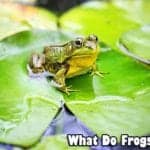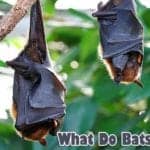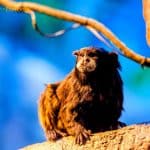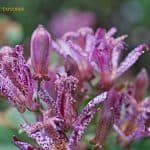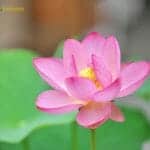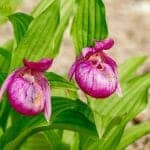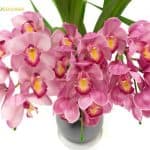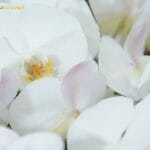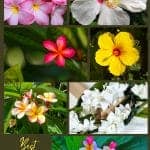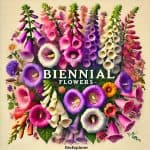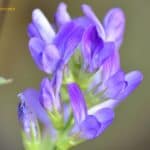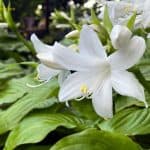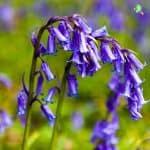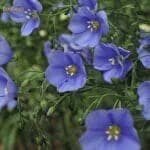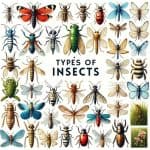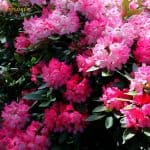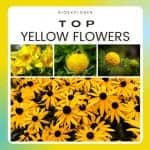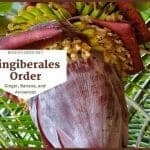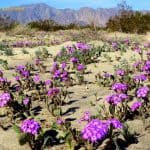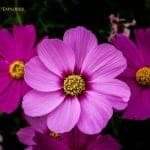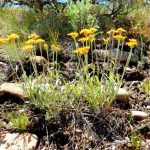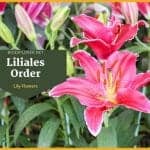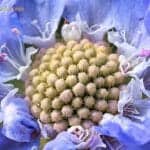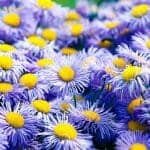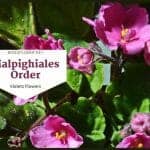types - search results
If you're not happy with the results, please do another search
Eastern White Pine
Explore the world of the Eastern White Pine, a majestic tree with a rich history and diverse uses. Learn about its characteristics, its role in the ecosystem, and how to care for it. Discover why the Eastern White Pine is more than just a tree; it's a symbol of resilience and a testament to nature's bounty.
Hawaiian Crow
Learn about the Hawaiian Crow (Corvus hawaiiensis), an intelligent and remarkable bird driven to near extinction. Discover facts on their unique adaptations, the threats they face, conservation efforts underway, and their deep cultural significance in Hawaiian society.
Albino Crows
Rare genetic variants, albino crows reveal key insights into pigmentation, survival, and biodiversity despite the challenges posed by their bright white plumage that lacks the species' typical protective camouflage.
15 Outstanding Birds of Ohio
At present, Ohio has 5 distinct geographical regions from Lake & Till Plains to Appalachian Plateau and Bluegrass Region. Find 15 Best Birds of Ohio here.
Red Monkeys
Red monkeys include over 50 species of primates from Asia, Africa and the Americas that exhibit signature red coloration on their fur, skin or body parts adapted for forest camouflage and heat regulation while also communicating social moods.
Spider Monkeys
Spider monkeys comprise 7 New World primate species adept at brachiating through Central and South American rainforest canopies, endangered due to habitat destruction. Their spindly prehensile tails, flexible shoulder joints, hook-like fingers and fusion-fission social groups represent unique adaptations for foraging canopy fruits.
Eastern Lesser Bamboo Lemur
The eastern lesser bamboo lemur (Hapalemur griseus) is a small, endangered rainforest primate found only in Madagascar. This unique species has adapted to specialize in a toxic bamboo diet other animals cannot consume. Yet habitat loss and hunting have left remaining populations highly vulnerable.
Top 26 Washington Birds
Explore the overview of 26 must-see top Washington Birds species including facts on goldfinches, owls, hawks, finches and more. This comprehensive guide will help with identification of birds of Washington.
What Is Biological Magnification?
Understand biological magnification - how toxins accumulate exponentially up food chains to dangerous levels in top predators. Unpack biomagnification impacts, sources, and solutions.
What Animals Live In Rainforests?
Discover the incredible biodiversity of the tropical rainforest. Dive deep into the habitats of rainforest animals, from the elusive jaguar to pink-toe tarantulas.
Red-billed Oxpecker
The red-billed oxpecker is a passerine bird found in the savannah of sub-Saharan Africa. These black birds assist grazers in getting rid of parasites but also expose wounds to infection. Explore their characteristics and fun facts here.
Top Spectacular Rainforests of The World
Rainforests are considered the planet’s oldest ecosystems. Here are the top most spectacular rainforests in the world (from different continents) & facts.
Top 25 Rare Birds of All Time
Explore the 25 rare birds in the world, including the Kakapo and Philippine Eagle, with stunning visuals, unique facts, and their incredible rare bird habitats.
What Do Eagles Eat?
Eagles are powerful birds with sharp beaks. Explore what do eagles eat, detailed eagles diet by types, how do eagles hunt, how often eagles eat & more here.
What Do Chameleons Eat?
Chameleons are unique animals considered to have originated from old-world lizards. Learn what chameleons eat by their types, how often & what eats them.
What Do Toads Eat?
Toads are notable for their dry, bumpy skin with glands located behind their eyes. Explore what do toads eat, toads diet by types, what eats toads & more.
What Do Frogs Eat?
Learn what do frogs eat in detail by types, how do frogs hunt, what eats frogs, and more. These amphibians diet consists of insects, earthworms & spiders.
What Do Lizards Eat?
All lizards belong to the reptiles family in the animal kingdom. Explore what do lizards eat, lizard diet by types, what eats lizards and all related topics.
What Do Squirrels Eat?
Squirrels are in the same family as marmots, prairie dogs, and chipmunks. Explore what do squirrels eat, squirrel's diet by types, what eats squirrels & more.
What Do Bats Eat?
After rodents, bats are the 2nd most popular mammal species. Explore what do bats eat, when do bats eat, bats diet by types, what eats bats & how bats hunt.
What Do Kangaroos Eat?
Kangaroos are marsupials that can only be found in Australia. Kangaroos are mostly herbivores. Explore what do kangaroos eat in detail by their types & more.
What Do Sloths Eat?
Sloths are arboreal creatures commonly found in South & Central America. Explore what do sloths eat, diet by types, how often, how much, & what eats sloths.
Hamlyn’s Monkey
The Hamlyn's monkey (Cercopithecus hamlyni), also called the owl-faced monkey, is an Old World monkey inhabiting the Congo's bamboo and primary rain forests. Hamlyn's monkeys have unique feet and hands in elongated phalanges.
Black-faced Lion Tamarin
The black-faced lion tamarin, also known as superagüi lion tamarin, is a small New-World primate in the Callitrichidae family. Black-faced lion tamarins are diurnal and seek refuge in hollows or tree holes at night.
Brown-mantled Tamarin
The brown-mantled tamarin also called the Spix's saddleback tamarin, is a species of saddleback tamarin native to South America. The species are considered "phyletic dwarfs," meaning their small size is linked to their evolutionary development.
Top 18 BEST Tundra Animal Adaptations
The coldest areas on Earth, such as regions close to the North Pole and the South Pole, have unique features. Here are the top 18 tundra animal adaptations.
What Do Peacocks Eat?
Peacocks are flashy birds renowned for their colorful tail plumage. Explore what do peacocks eat, their diet by types, and what eats peacocks & more here.
Top 25 Colorful Tulips: A Rainbow in Your Garden
Explore 25 colorful tulip s, from classic hybrids to rare species. Learn how to design, plant, and fun facts for a colorful spring garden.
Toad Lily
Tricyrtis affinis is a perennial Japanese plant of the Liliaceae. This species is endemic to Japan and can grow to a height of 30-60 cm. The flowers of Tricyrtis affinis are white with purple spots. The flowers have six free tepals in two whorls. Tricyrtis is a symbol of fertility.
Lotus Flower
The lotus (Nelumbo nucifera) is an emergent aquatic plant that grows with its roots at the bottom of the water source and its flowers and leaves on its surface. The lotus, sometimes mistakenly referred to as a water lily, is available in shades from bright pink to white. The plant has 2 round leaves that typically float on the water.
Lady’s Slipper
The Lady's Slipper (Cypripedium species) is a perennial wildflower of the Orchidaceae (orchid) family indigenous to North America. Presently 52 species are recognized in the Cypripedium genus. Lady's Slippers are available in three different color arrangements: yellow, pink and white, and the rare plain white.
The Top 25 Bicolor Flowers: Nature’s Two-Toned Wonders
Discover 25 stunning bicolor flowers, from rare orchids to common garden favorites. Learn about their habitats, care tips, and unique features in this guide.
Cymbidium
Cymbidium, commonly called boat orchid, is a genus of about 70 species of tropical and subtropical orchids in the Orchidaceae (orchid) family. Cymbidium orchids are available in colors including green, cream, yellow, burgundy, red, brown, apricot, orange, pink, and white.
Japheth Orchid
Cattleya orchids have a fantastic appearance that many plant lovers could not resist. The blooms are showy, prominent, fragrant, and come in various color patterns and colors. There are currently 35 natural hybrids and 46 recognized species of the genus Cattleya. These orchids are native to the tropics such as South and Central America.
Top 26 Best Hawaiian Flowers
Explore the top 26 unique Hawaiian flowers exclusive to Hawaii's archipelago. Dive into the world of these beautiful species, their interesting facts, and their significance in Hawaii's ecosystem.
Biennial Flowers: Nature’s Two-Year Spectacle
Explore the enchanting world of biennial flowers. Learn about their unique two-year life cycle, popular varieties for growing these spectacular blooms in your garden. Explore how foxgloves, hollyhocks, and other biennials can transform your landscape with patience-rewarding beauty.
Alfalfa
Learn about alfalfa (Medicago sativa), its flower characteristics, cultivation practices, environmental benefits, and economic importance in this comprehensive guide.
August Lily
Discover the August Lily (Hosta plantaginea): a perennial with fragrant white flowers, medicinal properties, and ecological benefits, perfect for shaded gardens and borders.
Bluebell Flower
Explore the enchanting Bluebell flower (Hyacinthoides non-scripta), its vibrant violet-blue blooms, ecological significance, different types of bluebells and fun facts in this comprehensive guide.
Perennial Flowers
Perennial flowers are long-lasting, low-maintenance garden gems that return yearly with beautiful blooms. Discover their characteristics and different types to create a vibrant, self-sustaining floral paradise.
Insect Orders
Explore 28 major insect orders under the class Insecta (diverse group of arthropods).Insects play vital roles in ecosystems, from pollination and decomposition to serving as food for other animals.
World’s Top 15 Poisonous Caterpillars
There are many kinds of poisonous caterpillars; several caterpillars develop chemical warfare - they become poisonous. Here are 15 species of poisonous caterpillars from around the world.
Azalea
Discover the vibrant world of Azaleas in our comprehensive guide. Learn about different types, ideal planting conditions, care tips, and how to handle common pests and diseases. Perfect your green thumb with our step-by-step guide to planting and propagating these stunning shrubs.
Top Yellow Flowers to Brighten Up Your Garden
Discover the top 66+ yellow flowers to brighten your garden. From sunflowers to daffodils, learn about their care, symbolism, and how to create a stunning display.
36 Most Colorful Birds In The World!
The most colorful birds give you a clue of the diversity in the world of birds (Aves). Here are the world's beautiful top 36 birds and their features.
Order Zingiberales / Ginger, Orchidantha & Banana Plants
Zingiberales' order comprises several species of great economic importance, like the banana and the ginger. Members have almost restricted distribution to tropical regions. Zingiberales species have ptyxis, large flowers, attractive colors, and inferior ovaries. Banana, Bird-of-paradise, Orchidantha, ginger, costus, and Canna lily are examples of Zingiberales order.
Desert Sand Verbena
The Desert Sand Verbena is a native species of the southwestern United States and Northern Mexico, growing in the sandy areas of the desert. The flowers are trumpet-shaped. The flowers are fragrant with 5 lobes.
Top 21 Facts About Blue Morpho Butterfly
The Blue Morpho butterfly is the most well-known species in the butterfly genus Morpho. Learn the top 21 facts about the Blue Morpho butterfly here.
America’s 15 Must-Visit Botanical Gardens: Discover Them Today!
From exquisite blooms to exotic plants, our guide to America's top 15 botanical gardens promises enchanting adventures. Don't miss out on these beautiful, botanical must-sees!
Top 15 Ecology News of 2022
In 2022 paves the way towards discoveries in ecological consequences influenced by genetic factors, climate change in marine habitat, coral reefs and plants having great adaptability to climate change, and the necessity towards conservation of biodiversity.
June Birth Flowers
Unlock the hidden secrets of your June birth flowers! Discover the symbolism behind roses and Honeysuckle, and delve into their rich history and fun facts here.
43 Blue Flowers Unveiled: Why These Beauties Have Captured Everyone’s Attention?
Discover the hidden secrets of 43 types of blue flowers in our captivating blog post. Explore the rarity of natural blue pigments in flowers and symbolism and meanings of blue flowers.
Cosmos
Cosmos are annual flowering plants with brightly colored, daisy-like blooms that are borne on long, slender stems. Cosmos is a species of flowering in the Asteraceae (sunflower) family native to the meadowland and scrubland of Mexico, where most species are found.
Lemon’s Rubberweed
Hymenoxys lemmonii is a perennial herb of the Asterceae family. The plant can grow to a height of 15-20 inches. The plants of the genus Hymenoxys contain sesquiterpene lactone hymenoxon, which is toxic to sheep.
Order Liliales / Lily Flowers
Liliales is the lily order of monocotyledonous flowering plants. Members of this order involve herbaceous plants, shrubs, and lianas. Liliales flowers are distributed worldwide but common in the subtropical and temperate regions. Lanzhou Lily, Chilean Bellflower, Katakuri/Trout Lily, and Wood's bunchflower are some of the Liliales example species.
Scabiosis
Native to Africa, Asia, Europe, and the Caucasus, Scabiosa includes around 70 species of small annual and perennial herbaceous plants that belong to the Caprifoliaceae (honeysuckle) family. These plants are mainly recognized by their unique appearance and genus name.
Monte Cassino
Loved by butterflies, gardening enthusiasts, and florists, this remarkable flower Monte Cassino spotlights delicate clear white clouds of dainty daisies with a yellow center that hovers over neatly trimmed small green leaves that form a sturdy, bushy clump. The florets on the central disc are generally yellow, surrounded by thong-shaped ligulate florets in white, purple, blue, or pink shades.
Order Malpighiales / Violets Flowers
Malpighiales order is a large group with species primarily distributed in tropical regions. The members of Malpighiales often have toothed and stipulate leaves, 10 free stamens, 3-5 fused carpels, a nectary, superior ovaries, and typically endospermous seeds. Most Malpighiales flowers consist of 5 sepals and 5 petals. The violets, flax, passion flowers, euphorbias, and mangroves are some of the notable species of Malpighiales.
September Birth Flowers
Discover the fascinating meanings behind September birth flowers, the Aster and Morning Glory. Learn about their origins, special meanings, and cultural importance for an enlightening read.
Top 21 Holly Flowers For Sprucing Up Your Garden!
Discover the enchanting world of Holly flowers with our comprehensive guide. Explore their vibrant beauty today from 21 notable Holly varieties from history to cultivation.


















